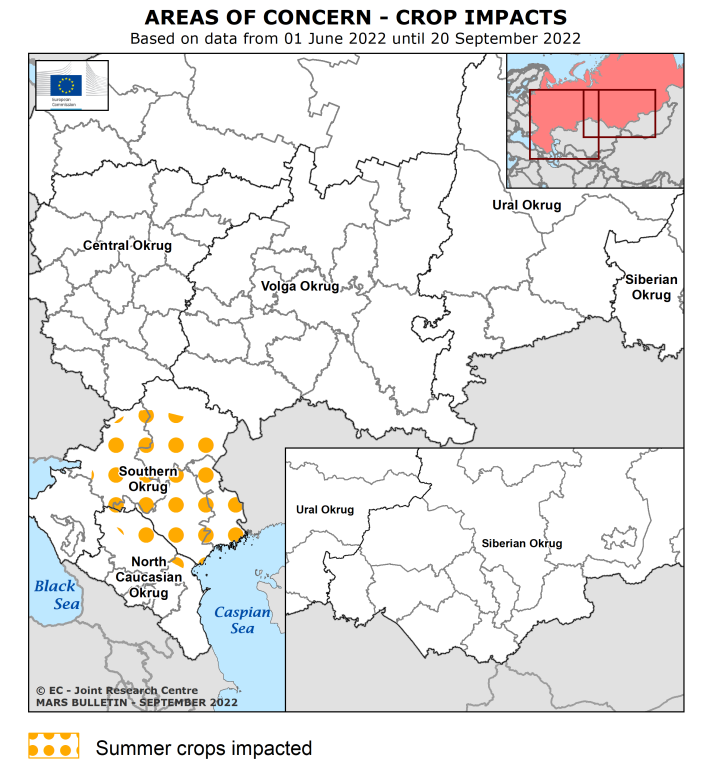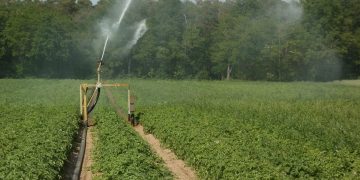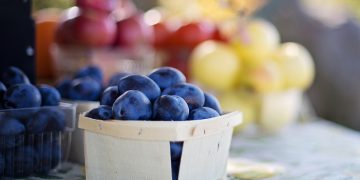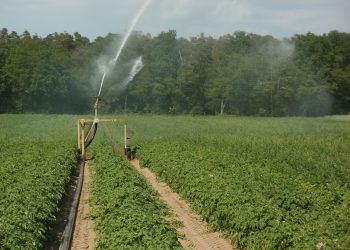Winter crops entered summer in very good condition in most parts of Russia, thanks to mild temperatures during winter and wetter and cooler-than-usual conditions during spring. In June, warmer temperatures and adequate soil moisture conditions provided a boost to crop growth. Hot temperatures in south-western parts, had a slightly negative effect on yield formation.
Most spring cereals producing regions also benefited from adequate soil moisture conditions and from the absence of thermal stress throughout the summer. However, grain maize in the main producing Southern okrug and the North Caucasian okrug suffered from a persistent rain deficit accompanied by a heatwave in August, with negative effect on the yield potential.

High yields for winter and spring cereals, fair yield for grain maize
Winter and spring cereals’ yield forecasts are well above the 5-year average. Grain maize yield forecast is below the historical trend but still above the 5-year average. The increased sown area of soft wheat led to a record high production of this crop, which we forecast close to 95 million tons.

We need your help: JRC MARS Bulletins Survey
The JRC MARS Bulletins Survey aims to collect information to better understand how you use the JRC MARS Bulletin. This will help us to improve our service in the future. Completion of the survey should take less than 10 minutes of your time. All information collected will be anonymous – no personal information is requested.
The survey is available at 2022 JRC MARS Bulletin – Crop Monitoring in Europe Survey
Further information
JRC MARS (Monitoring Agricultural Resources) Bulletins
The latest information about global agricultural production hotspots for countries at risk of food insecurity is available on the JRC’s ASAP (Anomaly hot Spots of Agricultural Production) site.
O artigo foi publicado originalmente em JRC.





















































